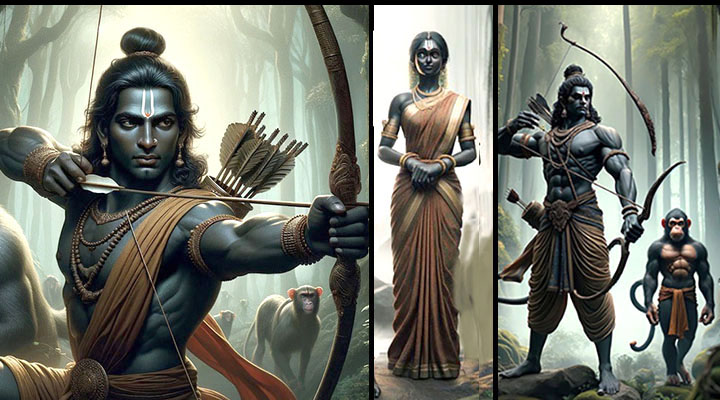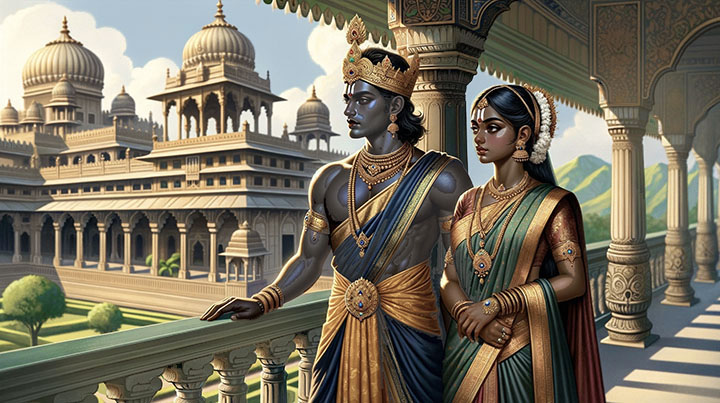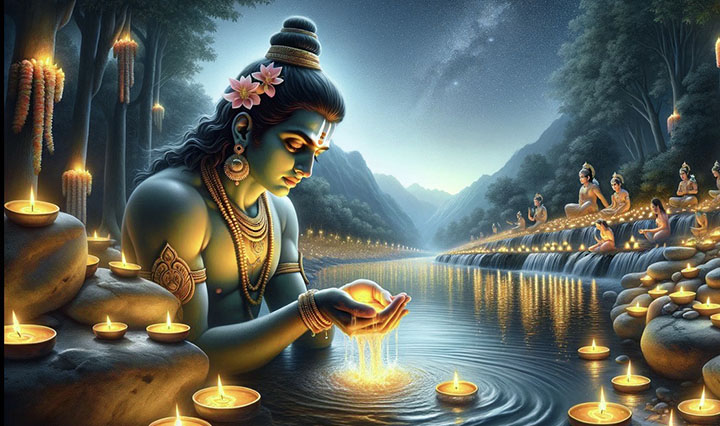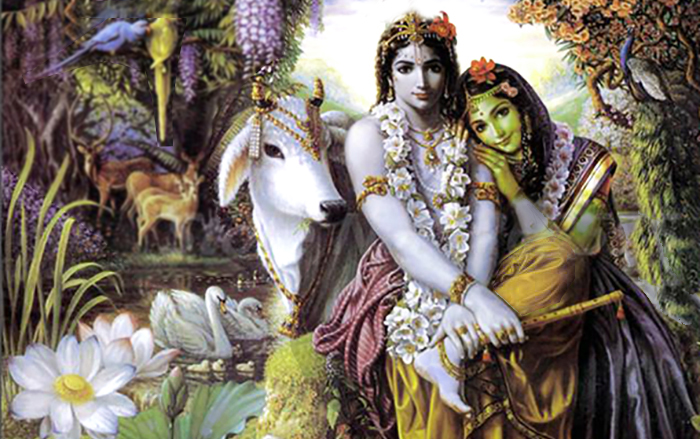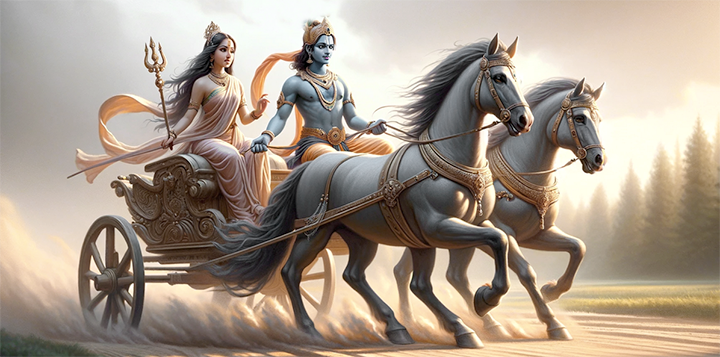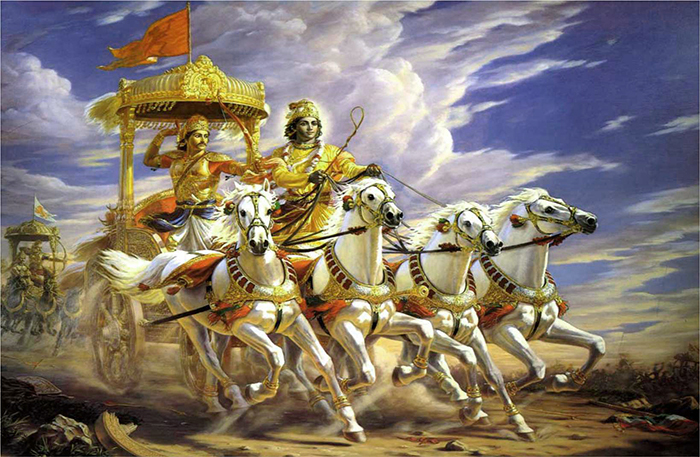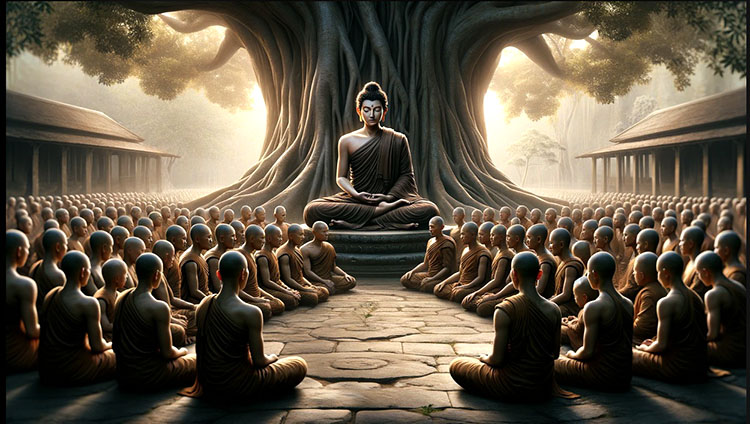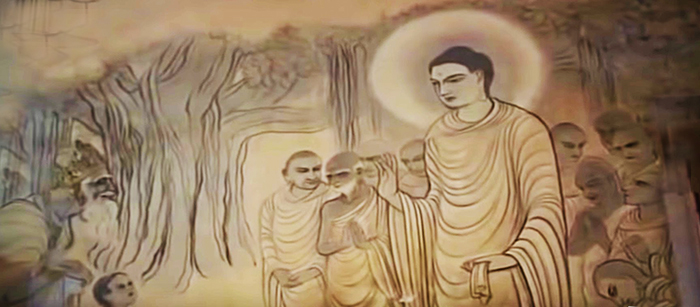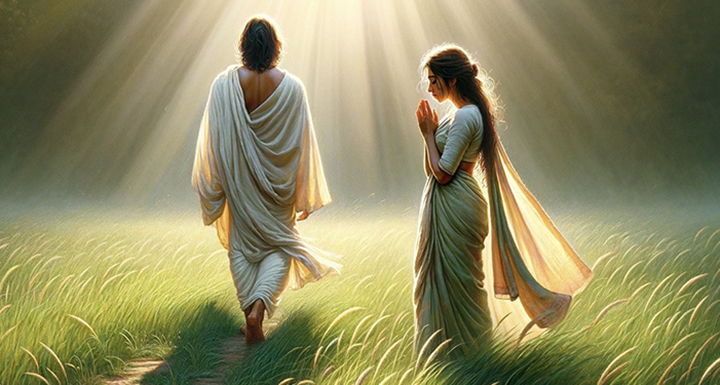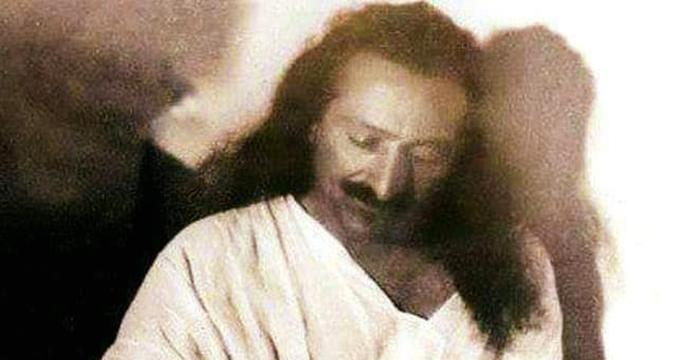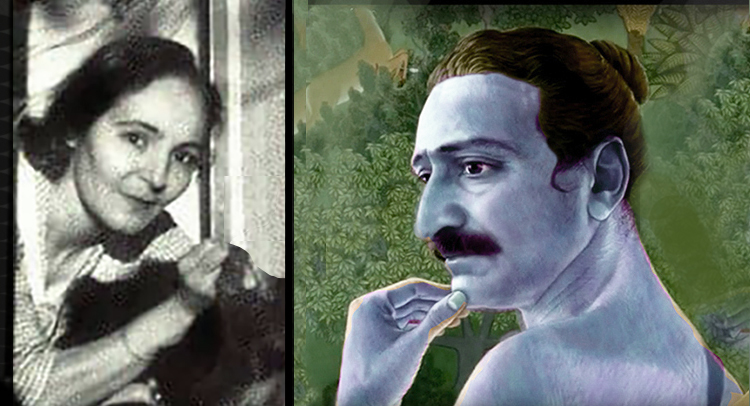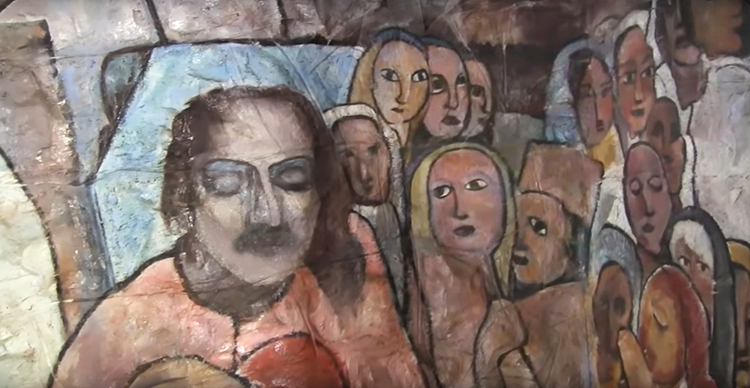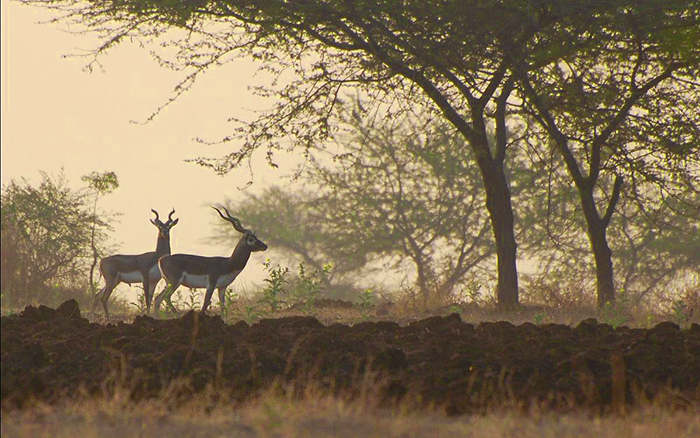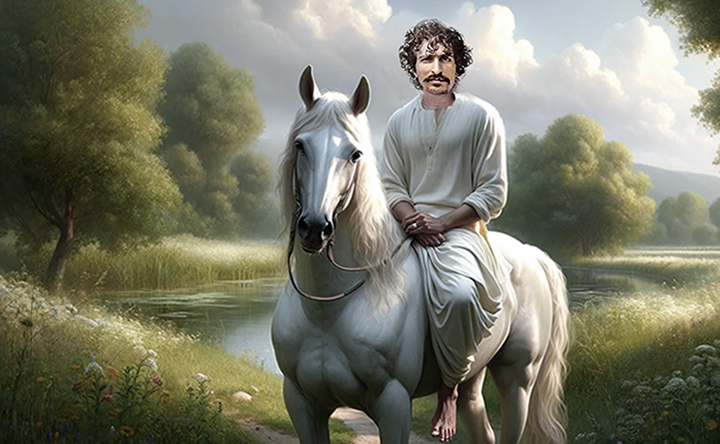THE AVATAR IN INDIA 5 TIMES
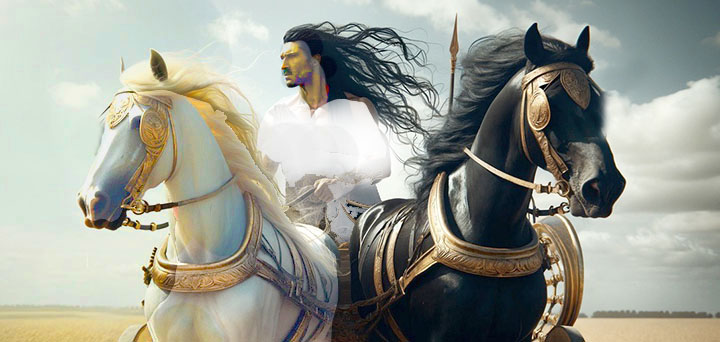
--------------------------------------
--------------------------------------
|
THE AVATAR WAS IN INDIA 5 TIMES, IN THE LAST 7,000 YEARS: - AYODHYA - DWARKA - SARNATH - KASHMIR - MEHERABAD "The first man to realize God as one indivisible and eternal Truth was taken up into this realization by the eternal Avataric infinite consciousness. "The veil with which the Avatar descends in the human form is placed upon him by the five Perfect Masters who bring him down from his formless being. In the Avataric periods, the five masters always put this veil upon the infinite consciousness of the Avatar, because if he were to be brought without such a veil into the world of forms, the existing balance between reality and illusion would be profoundly disturbed. However, when the five Perfect Masters think that the moment is ripe, they remove this veil which they have placed on the Avataric consciousness. From that moment the Avatar consciously starts his role as the Avatar The manifestation of an Avatar:
God-realized Masters always do exist on the physical as well as on other planes, but are not always known and seen physically. After cycles of years when spirituality reaches its lowest ebb, and materialism is at its highest points, and at those critical periods when there is chaos and misery everywhere, the impersonal aspect of Divinity assumes personality, and the world sees the physical manifestation of an Avatar, or Prophet.
The incarnation of the Avatar does not take place unless it is precipitated by the five Perfect Masters of the cycle. In all of his incarnations except the first, even the Avatar needs a master in order to come into his own eternal and infinite consciousness. He does not become an exception to the rule that a "touch" of a master is necessary for God-realization. However, the "touch" of a Perfect Master does not necessarily mean physical touch. God is everywhere, but can you see Him in everything? Can you feel Him in everyone you meet? You certainly do not. So God has assumed the form of man to tell you and awaken you all to the fact that God is everywhere and in everyone and in everything. The God-Man. The Avatar. All these are Quotes of Meher Baba.
Lord Rama The story of Rama. 4000 BC: RAM SITA EXILE The King of Ayodhya had three wives and four sons. Rama was the eldest, two were twins, Lakshmana and Shatrughna, and Bharata. Princess Sita had to choose her bridegroom from many princes.They were asked to string a giant bow. Rama picked it up, he strung the bow and broke it. Sita chose Rama as her husband and put a garland around his neck. Their love became a model for the entire kingdom, Years later, King Dasharatha decided to give his throne to his eldest son Rama. Queen Kaikeyi wanted her son Bharata to rule. Because of an oath, she got the king to agree to banish Rama for fourteen years. Rama, always obedient, went into banishment in the forest. Sita and Lakshmana accompanied him on his exile. One day Rama and Lakshmana wounded a demon princess. She returned to her brother Ravana, ruler of Lanka. Ravana sent one of his demons disguised as a magical golden deer to entice Sita. Rama and Lakshmana went out to find the dear, they drew a protective circle around Sita and told her that she would be safe if she did not step outside the circle. Ravana appeared as a holy man begging alms. Sita stepped outside the circle to give him food. Ravana grabbed her and carried her to his kingdom in Lanka. Rama then sought the help of a band of monkeys to help him find Sita.
Lord King Rama with Sita in the forest with Hanuman. RAM SITA EXILE True to the legendary epic a bridge did exist between Sri Lanka not so long ago, off the northwestern coast of Sri Lanka. Geological evidence suggests that this bridge is a former land connection between India and Sri Lanka, made of limestone shoals surrounded by a shallow sea. The thirty km long bridge, which separates the Gulf of Mannar from the Palk Strait, was reportedly passable on foot up to the 15th century until storms deepened the channel. The Rameshwaram temple records suggest that Rama’s Bridge was completely above sea level until it was destroyed in a cyclone in AD 1480. Hanuman, the general of the monkey band, could fly since his father is the wind. He flew to Lanka and, finding Sita in a grove, comforted her. Hanuman was caught but escaped with his tail on fire. and hopped from house-top to house-top, setting Lanka on fire. He flew back to Rama to tell him where Sita was. Rama, Lakshmana and the monkey army crossed over to Lanka where a cosmic battle ensued. Rama killed Ravana and freed Sita. They return to Ayodhya where Sita's purity is questioned. She is cast out
AYODHYA: LORD RAMA and SITA RAM SITA EXILE Sita is reunited with Rama after several years. Rama, though happy to see her, once again asks Sita to prove her virtue by passing a trial by fire. If she emerges unscathed, Sita will be welcome back to the palace. Sita enters the flames. They do not touch her. After years of exile and the humiliation of repeatedly being asked to prove her innocence, Sita chooses not to return to her husband. Sita asks the earth to embrace her if she is pure. The earth then parts to embrace Sita.
DIWALI 'Festival of lights' marks the day that Prince Rama triumphantly returns to his kingdom of Ayodhya with his wife. It is said that Ayodhya’s citizens welcomed their prince home with thousands of glowing oil lamps on a moonless night. The lamps symbolize the victory of good over evil, and Hindus celebrate this story every year by lighting millions of them all over the world. It started 7,000 years ago. INDIA PILGRIMAGE..more information. HOW TO VISIT: Ayodhya is most easily seen as a day trip from Lucknow. There are many fine hotels in Ayodhya and nearby Faizabad. Arrange a car for the 2 hour trip each way. Remember that temples close for 3 hours (11AM to 2PM). Stay for lunch, boat ride, bazaar etc. Then return to Lucknow. You must leave Ayodhya early to reuturn to Lucknow before dark. You can also take a train from Sarnath to Faizabad, next to Ayodhya. ------------------------------------------------------------- According to Vedas, Lord Krishna is a dark-skinned Dravidian. Even in traditional patta chitras (cloth art) in Odisha, Lord Krishna and Vishnu are always shown having black skin. Rama was Dravidian and very dark skinned. It was not until long after Krishna, that white skinned aryans migrated into India, around 1500 BC -----------------------------------------------------------
Lord Krishna MATHURA VRINDAVAN DWARKA KRISHNA in DWARKA The story of Krishna. 3000 BC A paper in 2004 by a group of archaeologists, religious scholars, from Somnath Trust of Gujarat, the supposed location of the where Krishna spent his last moments, fixes the death of Sri Krishna 3102 BC .The earliest text containing detailed descriptions of Krishna is the epic Mahabharata, which depicts Krishna as an incarnation of Vishnu. A relief found in Mathura, is dated to the 1st-2nd century AD. This fragment shows Vasudeva, Krishna' father, carrying baby Krishna in a basket across the Yamuna River. The Bhagavad Gita contain the advice of Krishna to Arjuna on the battlefield. The Harivamsa of the Mahabharata contains a detailed version of Krishna's childhood and youth in Vrindavan. Krishna is represented with some common features. His iconography typically depicts him with black, dark, or blue skin, like Vishnu Youth: Krishna was born as the eighth son to Devaki and Vasudeva. The night Krishna was born, a divine voice directed Vasudeva to smuggle the new born out of the Mathura prison and take him to his friend's house in Gokul and exchange his son with his friend's new born girl. Gokul is a town in the Mathura district of the Indian state of Uttar Pradesh. It is located 15 kilometres from Mathura. According to Bhagavata Purana, Krishna is said to have spent his first 3 years of childhood in Gokul. He then moved to Vrindavan until he was 11 years old. As a youth, the cowherd Krishna became renowned as a lover, the sound of his flute prompting the gopis to leave their homes to dance ecstatically with him in the moonlight. His favourite among them was the beautiful Radha. Krishna plays his flute and the gopis come immediately to the banks of the Yamuna River and join him in singing and dancing. After some time, Krishna and his brother returned to Mathura to slay the wicked Kamsa. Where he lived for 3 years. After killing the evil Kansa, Krishna left with his companions ( disciples) for Dwarka, finding the Mathura kingdom unsafe, Krishna led the Yadavas to the western coast of Kathiawar and established his court at ( next to modern Dwarka, Gujarat). He married the princess Rukmini and other wives. Radha probably did not accompany.
Krishna rescued Rukmini and made her his principal wife. Moving to Dwarka: DWARKA Krishna refused to bear arms in the great war. Krishna thus served as charioteer for Arjuna, one of the Pandava brothers. On his return to Dvaraka, in a fight among the Yadava chiefs, Krishna’s brother and son were slain. As Lord Krishna sat in the forest lamenting, a huntsman, mistaking him for a deer, shot him in his one vulnerable spot, the heel, killing him.
According to Puranic sources, Krishna's disappearance marks the end of Dvapara Yuga and the start of Kali Yuga, which is dated to February 17/18, 3102 BCE. There is a small temple in Veraval, by the sea and rivermouth, where people believe his body was fished out of the river and taken. Krishna Janmashtami -- A two day festival celebrating the birth of Lord Krishna. In either August or September. HOW TO VISIT: Mathura is a short train ride away from Delhi. There are many hotels, both in Mathura and Vrindavan. There is a nice hotel near the train station in Mathura. Fancier hotels are in Vrindavan. You can drive from New Delhi (3 hour drive) to Vrindavan and Mathura. You will need a few days to see the main sites, including Gokul. If you choose to go to Dwarka in western Gujarat, the journey is complicated. A train from Jamnagar is the easiest way. Jamnagar is the closest airport to Dwarka. The original Dwarka of Krishna's reign is underwater. Some people visit it with scuba. There are a couple hotels in Orcha. There are many nice hotels in Dwarka, by the sea.
Lord Buddha SARNATH: LORD BUDDHA SEAT INDIA PILGRIMAGE The story of Buddha. 700 BC Sarnath remained abandoned until 1834 when Alexader Cunningham excavated the site. Buddha founded Buddhism here around 700 BC. He gave his first sermon, "The Setting in Motion of the Wheel of Dharma", at Sarnath, near Varanasi. Sarnath means 'Lord of the Deer'. During the time of Gautama Buddha, Varanasi was part of the Kingdom of Kashi. Buddha (Siddh?rtha Gautama) preached that desire was the root cause of suffering and that people should seek to eliminate desire. Buddha was never seen as being merely human. He is often described as having the thirty-two major and eighty minor marks or signs of a mah?puru?a; the Buddha himself denied that he was either a man or a God; and in the Mah?parinibb?na Sutta he states that he could live for an eaon were he asked to do so. The Buddha’s First DiscourseLord Buddha was born in Lumbini and married a princess. They had a son. Buddha left Lumbini seeking enlightenment. He was awakened sitting under a Bodhi tree in Sri Lanka: "The Buddha believed that the five ascetics, who had followed him while he was practicing severe austerities, may understand the realities he had realised. Therefore, he set out and walked in stages from Sri Lanka to Sarnath in northern India. The five ascetics had previously held Siddhartha in high esteem but when they saw that he had shifted away from austere practices, they thought he was following the path of self-indulgence, had failed and abandoned him. When the five ascetics first noticed the Buddha had returned and was approaching them, they made a pact to not pay respects. However, as the Buddha came closer, they perceived a brightness and radiance that they could not resist. They greeted him respectfully, took his bowl and robe, offered water and prepared a seat for him. The Buddha told them he had woken up to the truths of existence and that he was a fully enlightened one. At first, they were reluctant to listen to what the Buddha had to say, stating that he had given up living a life of austerities and therefore it was not possible for him to be awake. The Buddha, however, repeated that he was fully awakened. He asked them if they had ever known him to not tell the truth, and the five ascetics said no. Eventually, they were willing to listen, opened their hearts and heard the Dharma."
Buddha established his ashram in Sarnath. He had many disciples who later traveled the world and established Buddhism in many Eastern countries. His female disciples were called nuns, who lived separately from the men. After Buddha died he was cremated and his ashes were given to his lovers who made 4 stupas. Sarnath is the place of Buddha, though many places consider themselves equally important. At Sarnath now are his ruins, stupa and museum. In Sarnath every country has built their own structures that represents their school of Buddhism. Among the several temples, monasteries and structures, Thai Temple is the most famous place of worship that is managed by only Thai Buddhist Monk. There are Tibetan, Chinese, Japanese temples, and more. Sarnath attractions to visit https://timesofindia.indiatimes.com/travel/destinations/sarnath-attractions-that-you-shouldnt-skip/gs56469286.cms HOW TO VISIT: Saenath is a mere 10 Km from Varanasi. There are flights from Delhi and elsewhere to Varanasi. You can drive from Lucknow, a 4 hour drive, or less. Trains arrive from all over India. There are fine hotels in Sarnath and many hotels in Varanasi, by the ghats overlooking the River Ganges. --------------------------------------------- --------------------------------------------
Lord Jesus KASHMIR INDIA: LORD JESUS The story of Jesus after his crucifiction: He revived after three days and left with his closest disciples. They walked East and visited India and further East. Their final destination was Kashmir, India where Jesus may have retired, a shepard in Kashmir. around 100 AD. Yuzmarg (meaning Jesus meadow) is a valley meadow where perhaps they had a flock of sheep. One can visit Yuzmarg by car (about an hour and a half drive). Driving North from Srinagar, the valley of Harwan is where he was eventually buried by his close disciples, on a mountain. His tomb is in a small cave on the side of the mountain of which the entrance is covered by rock slide. There is a Buddist Monastary ruins on a nearby hill. The Buddist monastery was in use 2,000 years ago. The view from the Buddhist monastery ruins is of the mountains across the narrow valley of Harwan in Kashmir. HOW TO VISIT: You can easily fly to Srinagar from Delhi or from Lucknow. There are many taxis available in Srinagar and a Tourist Center in town. Hundreds of fancy hotels and budget options are available. Don't be misled by a place in Srinagar that is said to be the burial place of Jesus. He was buried in north Harwan, north of Srinagar
Lord Meher Baba AVATAR MEHER BABA, KALKI: THE WHITE HORSE AVATAR Meher Baba began a seven-year period of spiritual awakening with the five perfect master of the time: Hazrat Babajan, Upasni Maharaj, Sai Baba of Shirdi, Tajuddin Baba and Narayan Maharaj. In 1925, he began a 44-year period of observed silence, during which he communicated first using an alphabet board, and by 1954, entirely through hand gestures, which his closest disciples would interpret.
Meher Baba started the 'New Life': It is endless, and will be kept alive by those who live the life of complete renunciation of falsehood, lies, hatred, anger, greed and lust; and who, to accomplish all this, do no lustful actions, do no harm to anyone, do no backbiting, do not seek material possessions or power, who accept no homage, neither covet honor nor shun disgrace, and fear no one and nothing; by those who rely wholly and solely on God, and who love God purely for the sake of loving; and who, without being upset by calamities, bravely and wholeheartedly face all hardships with one hundred percent cheerfulness, and give no importance to caste, creed and religious ceremonies. This New Life will live by itself eternally, even if there is no one to live it. Meher Baba travelled extensively and worked with the mad, the lepers, the God intoxicated and the poor. He trained his disciples at various times in various ashrams. He dictated two books: 'God Speaks' and 'The Discourses'.
MEHERABAD: MEHER BABA'S SAMADHI His tomb (Samadhi) is a place of pilgrimage. Meher Baba's taught that the goal of all beings was to gain consciousness of their own divinity, and to realize the absolute oneness of God. Meher Baba described the phenomenal world as illusory and that the Universe is imagination. God exists, and each soul is God passing through imagination in order to realize its own divinity. He advised how to attain God-realization, and thereby escape the wheel of birth and death. " I am equally approachable to one and all, big and small, To saints who rise and sinners who fall, Meher Baba passed January 31, 1969. Celebrated every year as Amartithi. • Meher Baba's Birthday is celibrated February 25 * Silence Day is observed July 10. The Dhuni Fire is lit the 12th of every month.
HOW TO VISIT: Ahmednagar is a two hour drive from Pune. Meherabad is a 20 minute drive from Ahmednagar. There is a train station in Ahmednagar. There are several hotels in Ahmednagar with restaurants. There is a Pilgrim Retreat which requires reservations in advance. It is possible to hire a taxi in Pune to visit the Samdhi for darshan and return to Pune the same day (two hours each way). The Samadhi is open for darshan to all: 6 AM to 8 PM. INDIA, TABLE OF CONTENTS : JOURNEYS, FABRICS: SUPERSTRUCTURE Suggested proposal for the Samadhi Superstructure.. ------------------------------------------------------
|
|
|
THE WHITE HORSE AVATAR, KALKI AVATAR ----------------------------------------------------- THE FOUR STATES OF RAMA AS EXPLAINED BY MEHER BABA: THE PARABRAHMA STATE: This is the second important state of God. In this state, all God's attributes exist. It is full of infinite bliss, infinite beauty, infinite love; it is the state of complete [divine] consciousness. It is devoid of the first state — God's unconscious state. And to say it is the Paramatma state would also not be correct. JIVATMA STATE : This is the third state of God, of you all sitting here — the drops of the same Infinite Ocean. SHIVATMA STATE : When the jivatma is merged in Paramatma, he becomes Shiva. You are all drops. Paramatma is the Ocean. When this jivatma bubble bursts and becomes one with the Ocean, it is Shivatma. In others words, it is the state either of the Perfect Master or a majzoob. This soul can never have a fall from his highest divine state. This is the state of the seventh plane [Brahma Bhuwan] and is called the Shiva state. But when the Shivatma regains gross consciousness of the world, he is called the Sadguru. The Ever-Conscious Paramatma of this fourth state, who comes down on this gross plane age after age when maya is at its height, is called the Avatar. He is always the One, the same in whatever age and under whatever name he might have descended — Ram, Krishna or Buddha. Meher Baba information: https://avatarmeherbabatrust.org/ INDIA, TABLE OF CONTENTS : JOURNEYS, FABRICS: SUPERSTRUCTURE |
VISIT INDIA --------------------------- |
VISIT INDIA ---------------------------- |
VISIT INDIA --------------------------- |
||
| • HIMALAYAN VALLEYS | ||||
|

